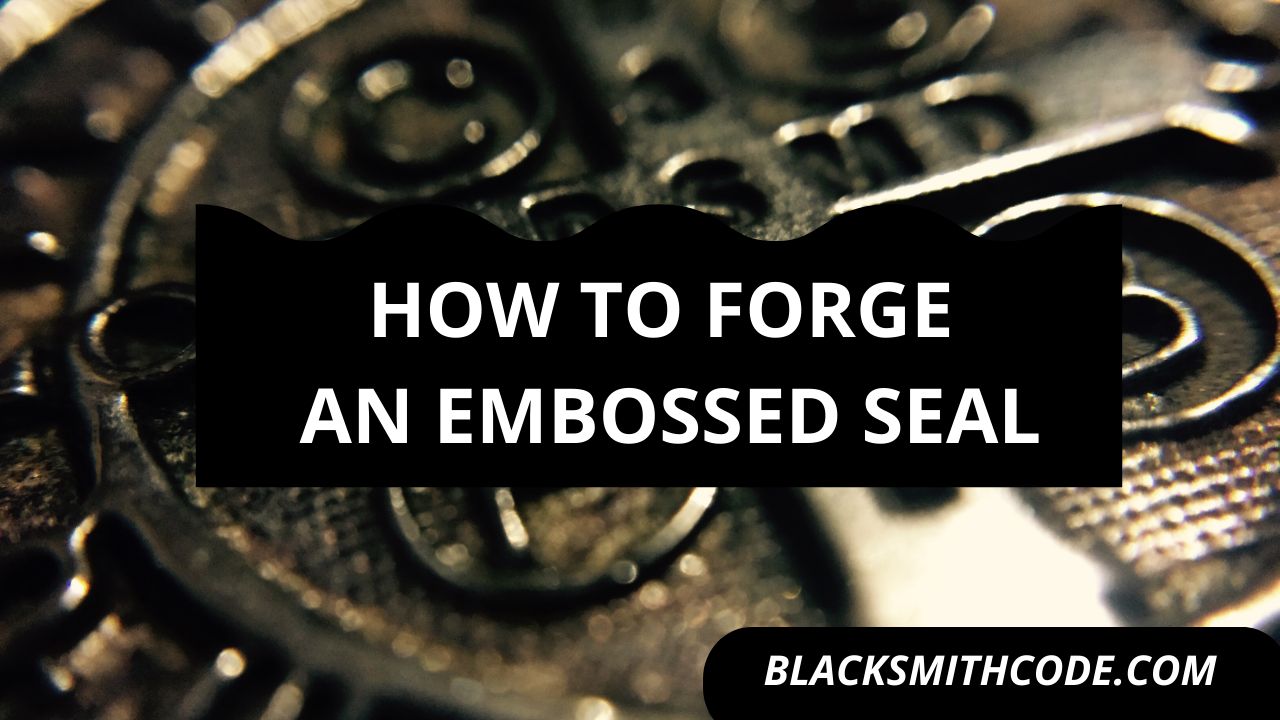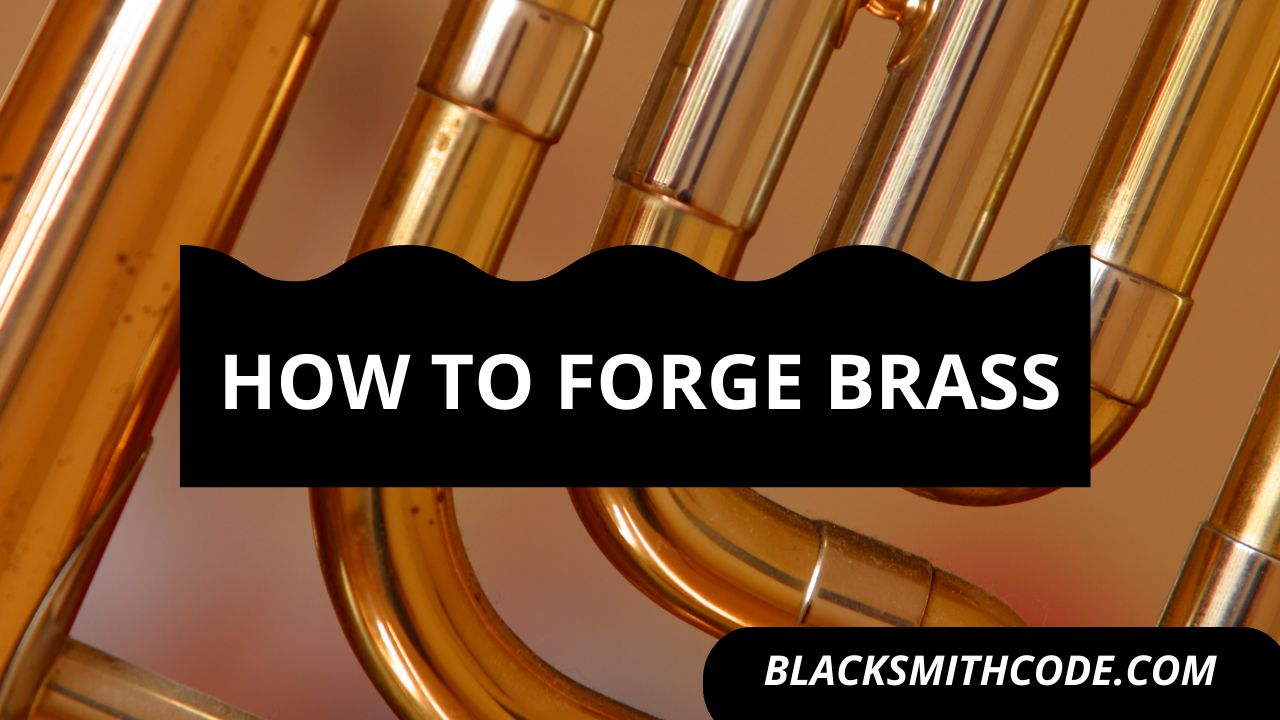Do you know artistic creativity is one of the cores of blacksmithing? There is no limitation to what blacksmiths can create with their forging process. Read on to find out how to forge an embossed seal.
An embossed seal involves the creation of raised image design and craft on a metal template. The embossed seal usually contains patterns that are raised against its background. It is often a creative carve on the surface of a specific type of material, including metals.
Carving an embossed seal on steel makes it relatively permanent. Although the process requires creativity and patience, the process is not so challenging.
Here are simple steps to forge an embossed seal.
Essentials
Some materials are essential for the easy forging of an embossed seal. The entire process might be unachievable without these essentials or better still, and they will be difficult. Here are some of the essentials for forging an embossed seal.
Instructions on How to Forge an Embossed Seal
Step 1: Create Your Initial Design
The design creation stage is crucial for creating an embossed seal. The design you create will be the carving or the pattern on the seal. Therefore, this step is a critical determinant in the result you will get.
The design for embossed seals is often specific. It is usually dependent on the type of seal you want to create as well as the purpose of the seal.
Before proceeding with the design, choose the size of the seal you want to create. The size of the seal will determine the dimension of your design.
Design the pattern until you find it suitable. It is best to create the design on a material that can stay on the surface of heated metal.
Step 2: Heating
Choose the steel you want to use. The steel must be of a suitable size to fit your design. Once all these are in place, it is time to heat the iron.
Quick Steps
- Heat the steel until a magnet cannot stick to it.
- Wrap the steel in fire glass and let it cool slowly to ease the annealing process
- After you through with the annealing, find out if you can now make a soft cut on the metal with steel.
Step 3: Carving
Once your steel is at a workable temperature, it’s time to carve out your design when forging an embossed seal. You have to put your files and hacksaw blades to use. It would help if you were careful with this process because correcting mistakes can be a little challenging.
Also, you should leave enough materials at the base of the steel. The material should be strong enough to withstand a series of hammer blows. The carving process can take a little while to complete.
Pro Tip
You can check your pattern by pounding the steel on the side wood.
- You should also remove all the blurs if there is any.
- Use a steel brush on the pattern to leave a clean carve
Step 4: Hardening
If you are sure that the pattern is what you want, then it is time to re-harden the steel.
Pro Tip
- Re-heat the steel until you achieve a transition temperature.
- Once you reach this temperature, quickly quench it in water.
- You can ascertain the hardness of the steel by using the file on it again. By now, the file should not be able to cut through.
- Shine the stamp with a steel brush and move on to the finishing.
Step 5: Finishing
The finishing is mainly dependent on the material you started with and the end product you intend to create. However, the end product of the work should be neat and appealing. Likewise, it should give the design in the exact way you want it.
Polish the product if you need to and fine-tune it to meet your standard.
FAQs on How to Forge an Embossed Seal
Question
How long does it take to forge an embossed seal?
Forging an embossed seal shouldn’t take a lot of time. The process only requires technicality, but it is not time-consuming. The total time for forming an embossed seal should not be more than 3-6 hours.
The time variation can be due to several factors. These factors include the availability of tools and materials, experience, and the type of design you intend to create.
Question
Is there a standard design for the embossed seal?
There are no standard designs for embossed seals. The design is highly dependent on the type of seal you intend to create and the purpose of the seal. It is best to use a design that is not difficult to carve if you are forging an embossed seal for the first time.
Question
Can I create an embossed seal on paper?
Yes. It is possible to create an embossed seal on paper. However, the type of seal you would create is different from the forged embossed seal. The processes are different in that the materials are also different.
Question
Is it legal to forge a seal?
The legality of forging a seal varies. If you are creating your seal for personal use, there might not be any legal challenge. However, if you are creating a seal from an existing one, be careful not to commit a crime of forgery.
Creating a seal for fraudulent acts is considered illegal in most countries around the world
Video on How to Forge an Embossed Seal
Warnings
It is essential to take some particular precautions while forging the embossed seal. These precautions are essential for getting your desired result and ensuring your safety.
- Ensure that you heat your steel to a workable temperature before attempting to carve your design.
- Don’t forget to harden the steel after carving.
- Be careful not to cut your finger while carving your design
- Only heat the iron to the appropriate temperature for carving and hardening.
- Ensure to put on your safety gear and follow other safety precautions in the blacksmithing shop.





